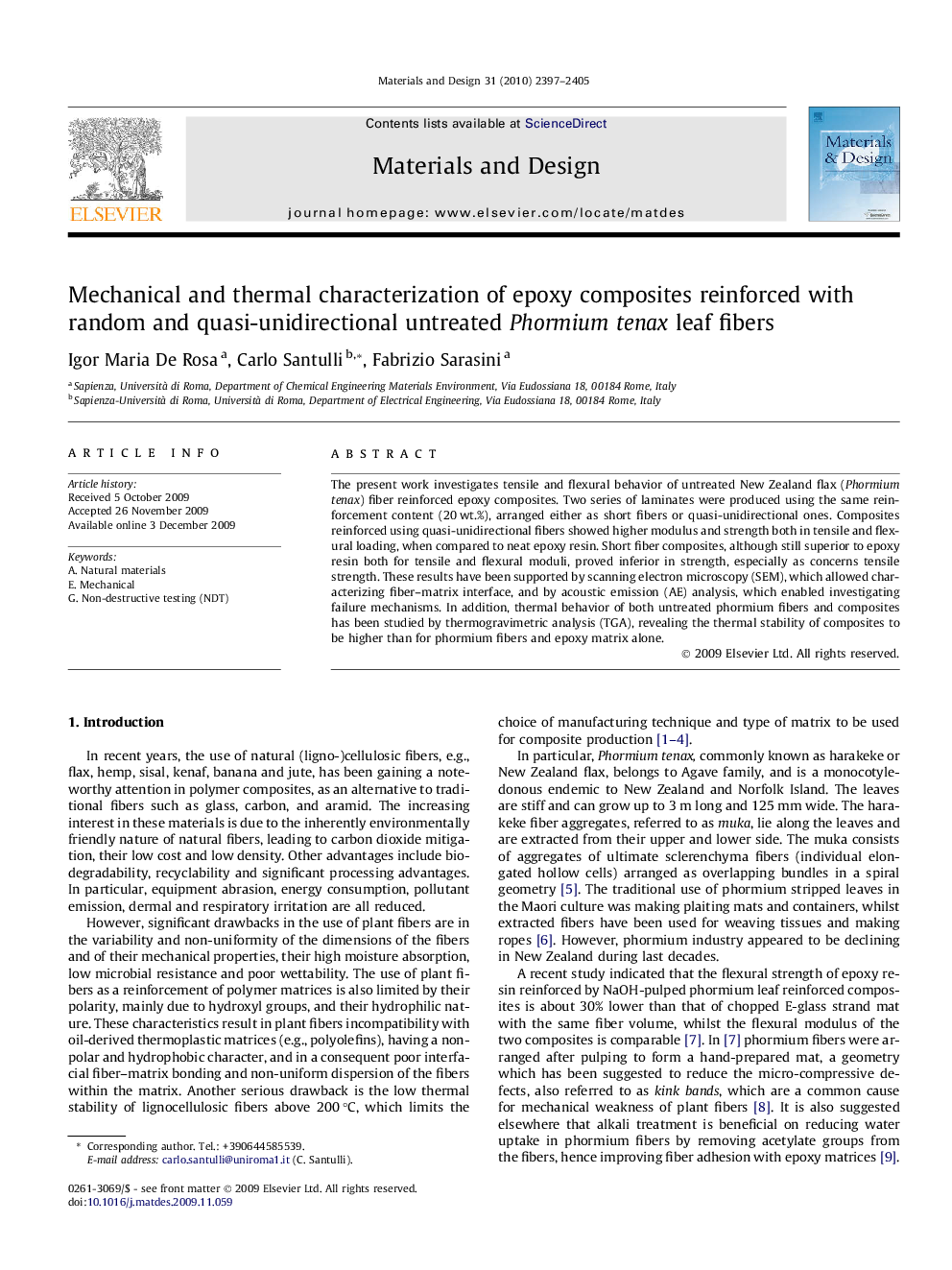| Article ID | Journal | Published Year | Pages | File Type |
|---|---|---|---|---|
| 832062 | Materials & Design (1980-2015) | 2010 | 9 Pages |
The present work investigates tensile and flexural behavior of untreated New Zealand flax (Phormium tenax) fiber reinforced epoxy composites. Two series of laminates were produced using the same reinforcement content (20 wt%), arranged either as short fibers or quasi-unidirectional ones. Composites reinforced using quasi-unidirectional fibers showed higher modulus and strength both in tensile and flexural loading, when compared to neat epoxy resin. Short fiber composites, although still superior to epoxy resin both for tensile and flexural moduli, proved inferior in strength, especially as concerns tensile strength. These results have been supported by scanning electron microscopy (SEM), which allowed characterizing fiber–matrix interface, and by acoustic emission (AE) analysis, which enabled investigating failure mechanisms. In addition, thermal behavior of both untreated phormium fibers and composites has been studied by thermogravimetric analysis (TGA), revealing the thermal stability of composites to be higher than for phormium fibers and epoxy matrix alone.
